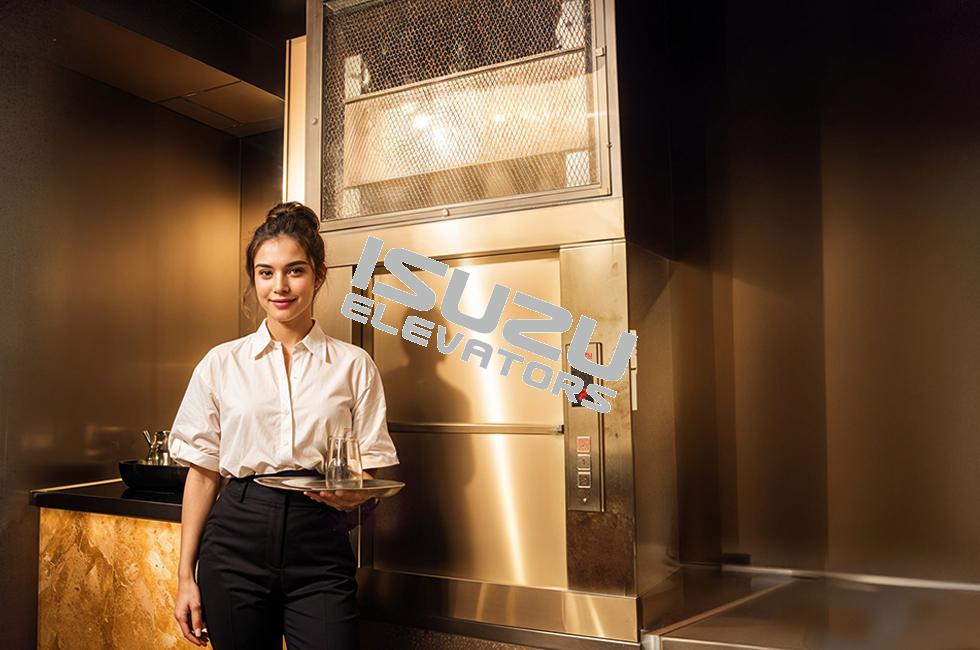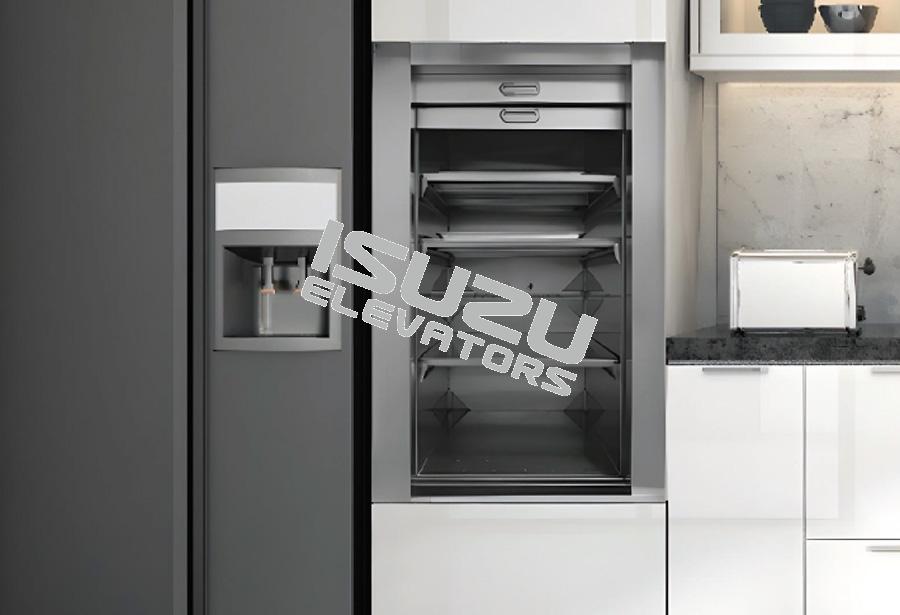Let’s Start Work
Together
Please feel free to contact us. We will get back to you as soon as possible. Or just call us now.
Dumbwaiter Elevator—Smart, Compact, and Efficient Goods Transport
A Dumbwaiter Elevator is a small freight lift designed to transport food, documents, laundry, medical supplies, and other lightweight goods between floors. These compact elevators are commonly used in restaurants, hotels, hospitals, offices, and homes, offering a safe, fast, and convenient way to move items while reducing manual labor. At Isuzu Elevator, we provide high-quality dumbwaiters with smooth operation, advanced safety features, and durable materials to ensure long-lasting performance.

Industries That Benefit from Dumbwaiter Elevators
Restaurants & Hotels
🔹 Quickly transports food, drinks, and tableware between kitchen and dining floors.
🔹 Reduces waiting times for customers and keeps staff focused on service.
🔹 Prevents food spills and accidents caused by carrying trays manually.
Hospitals & Healthcare Facilities
🔹 Essential for transporting medical supplies, sterilized tools, and documents.
🔹 Ensures quicker response times by getting urgent medical items to different floors.
🔹 Reduces contamination risks with secure, enclosed transportation.
Offices & Corporate Buildings
🔹 Moves files, office supplies, and stationery between floors effortlessly.
🔹 Saves employee time and enhances workflow efficiency.
Residential Homes
🔹 Conveniently moves groceries, laundry, and household items between floors.
🔹 Ideal for elderly or mobility-challenged individuals, reducing strain.
🔹 Adds luxury and convenience to multi-story homes.

Technical Features & Specifications
We offer custom freight elevators tailored to various industries, including:
-
Load Capacity: Available from 50 kg to 300 kg, customizable for different needs.
-
Door Options: Choose from manual or automatic sliding doors for effortless use.
-
Cabin Material: Built with stainless steel, glass, or powder-coated finishes for durability.
-
Control System: User-friendly push-button panels for easy operation.
-
Power Supply: Low-energy consumption with optional battery backup for emergencies.
-
Installation Type: Can be wall-mounted or floor-supported, adaptable for various buildings.
Why a Dumbwaiter Elevator is a Must-Have
Reliable Safety Features
Equipped with automatic door locks, overload protection, and an emergency stop button, ensuring secure and smooth operation.
Enhances Convenience and Efficiency
Whether transporting food, medical supplies, or documents, dumbwaiters improve workflow, saving time and effort in daily tasks.

Our Dumbwaiter Services
-
Dumbwaiter Installation : Our team provides professional installation with a focus on safety, efficiency, and seamless integration into your space.
-
Dumbwaiter Maintenance & Repairs : Regular dumbwaiter maintenance ensures long-term durability and safety. Our technicians provide quick inspections, lubrication, and troubleshooting to prevent unexpected failures.
-
Dumbwaiter Modernization & Upgrades : If you have an old dumbwaiter, we offer modernization services to upgrade controls, speed, and energy efficiency while enhancing safety features.
Frequently Asked Questions (FAQs)
A dumbwaiter is a small freight elevator designed to transport goods between floors, commonly used in restaurants, hotels, hospitals, and homes.
It is ideal for moving food, medical supplies, laundry, documents, and other small items efficiently between floors.
Dumbwaiter capacities vary, typically ranging from 50 kg to 300 kg, depending on the model and usage.
Yes, dumbwaiters consume minimal power compared to traditional elevators, making them an energy-efficient transportation solution.
Absolutely! Many homeowners install dumbwaiters to transport groceries, laundry, or other household items between floors.
Safety features include automatic door locks, overload protection, emergency stop buttons, and smooth, quiet operation.
Dumbwaiters are compact and can be customized to fit various spaces, requiring a small shaft or wall opening for installation.
Installation typically takes a few days, depending on the building structure and model specifications.
Regular maintenance includes checking cables, lubrication, and inspecting safety mechanisms to ensure smooth operation.
Prices vary based on size, load capacity, and customization, but they are generally more affordable than traditional elevators.
